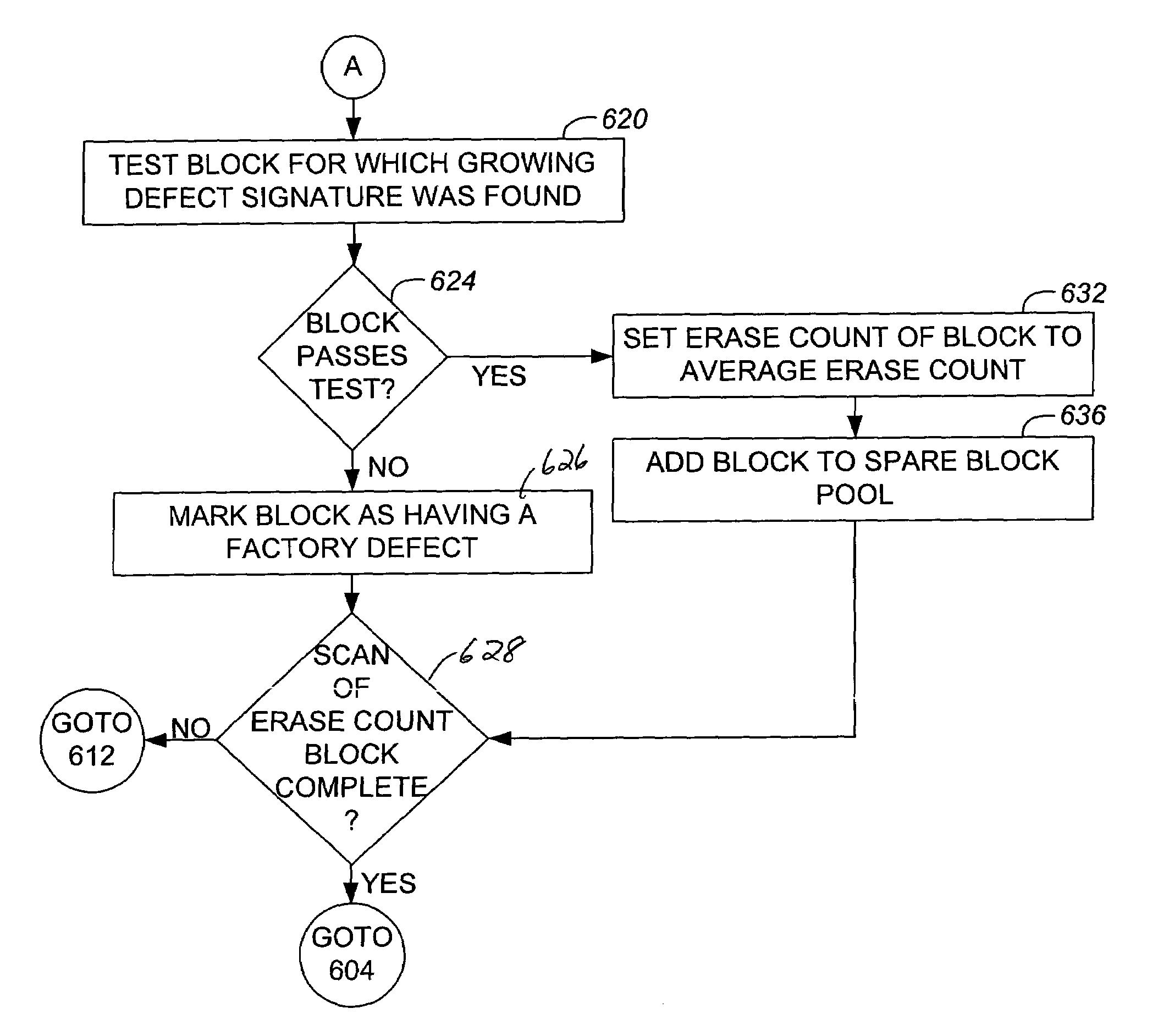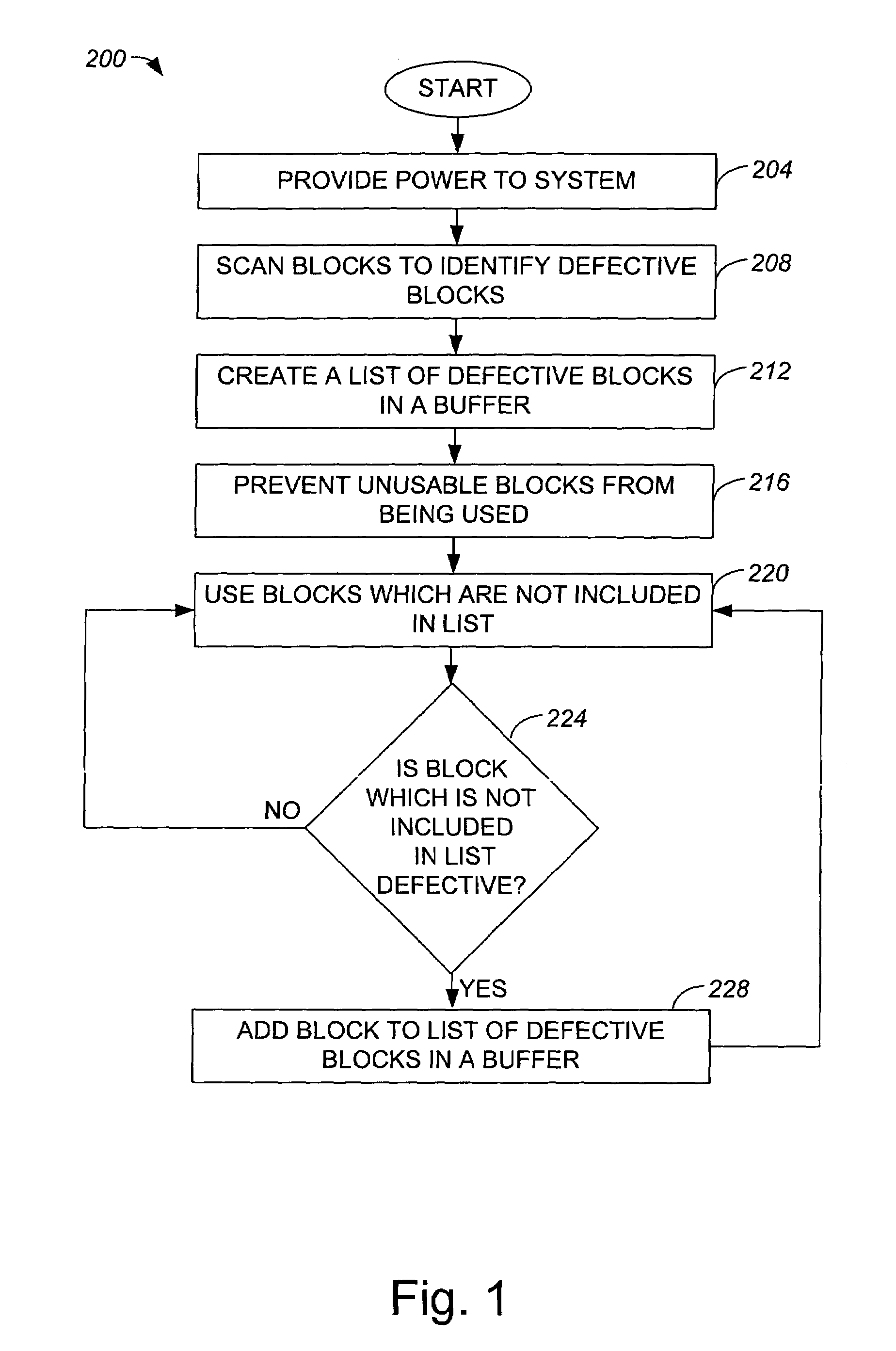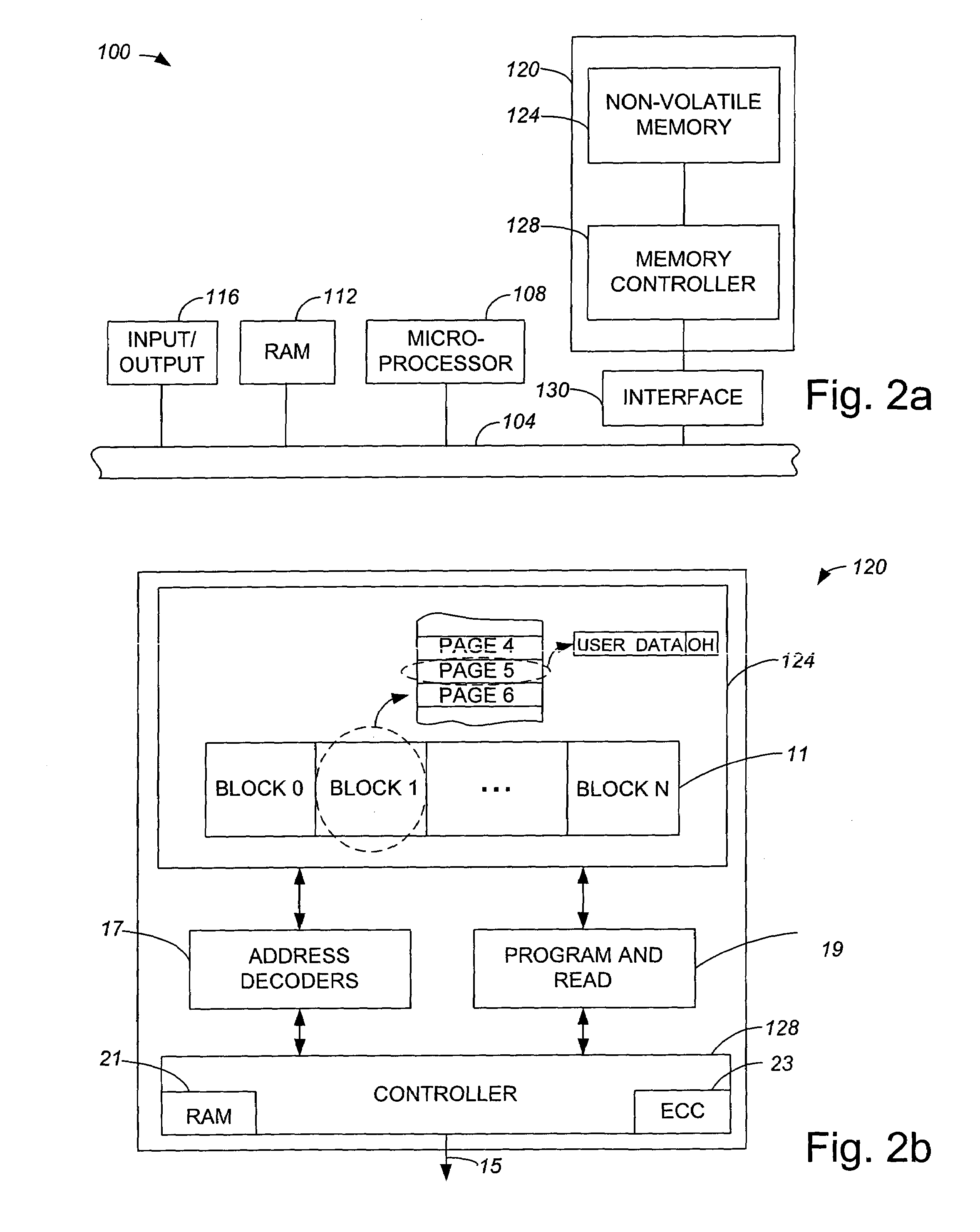Unusable block management within a non-volatile memory system
a non-volatile memory system and management technology, applied in the direction of fault response, instruments, error detection/correction, etc., can solve problems such as defective blocks, failure to hold electrical charges, manufacturing or factory defects
- Summary
- Abstract
- Description
- Claims
- Application Information
AI Technical Summary
Benefits of technology
Problems solved by technology
Method used
Image
Examples
Embodiment Construction
[0036]When a memory system which includes a non-volatile memory has a pool of spare physical blocks which is being depleted, i.e., is running low, a user of the memory system may effectively be forced to compensate by the lack of available memory. For instance, a user may obtain additional non-volatile memory, which may be expensive. At times, physical blocks of a non-volatile memory which are identified as being unusable or defective in some environments may actually be suitable for use at a later time in a different environment. For example, physical blocks which have been identified as being unusable due to growing defects may, upon the implementation of a thorough testing process with a rigorous pattern, be reclaimable. When there may be usable blocks which have been characterized as being unusable, some potentially usable blocks are effectively being wasted.
[0037]By reclaiming potentially usable blocks which have previously been identified as being unusable for use, substantial...
PUM
 Login to View More
Login to View More Abstract
Description
Claims
Application Information
 Login to View More
Login to View More - R&D
- Intellectual Property
- Life Sciences
- Materials
- Tech Scout
- Unparalleled Data Quality
- Higher Quality Content
- 60% Fewer Hallucinations
Browse by: Latest US Patents, China's latest patents, Technical Efficacy Thesaurus, Application Domain, Technology Topic, Popular Technical Reports.
© 2025 PatSnap. All rights reserved.Legal|Privacy policy|Modern Slavery Act Transparency Statement|Sitemap|About US| Contact US: help@patsnap.com



